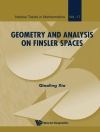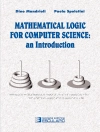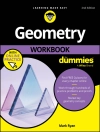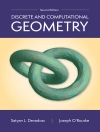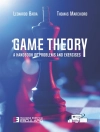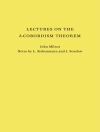The first complete, in-depth study of the origins of division in extreme and mean ratio (DEMR)-‘the Golden Number’-this text charts every aspect of this important mathematical concept’s historic development, from its first unequivocal appearance in Euclid’s Elements through the 18th century.
Readers will find a detailed analysis of the role of DEMR in the Elements and of its historical implications. This is followed by a discussion of other mathematical topics and of proposals by modern commentators concerning the relationship of these concepts to DEMR. Following chapters discuss the Pythagoreans, examples of the pentagram before 400 H.C., and the writings of pre-Euclidean mathematicians. The author then presents his own controversial views on the genesis, early development and chronology of DEMR. The second half of the book traces DEMR’s post-Euclidean development through the later Greek period, the Arabic world, India, and into Europe. The coherent but rigorous presentation places mathematicians’ work within the context of their time and dearly explains the historical transmission of their results. Numerous figures help clarify the discussions, a helpful guide explains abbreviations and symbols, and a detailed appendix defines terminology for DEMR through the ages.
This work will be of interest not only to mathematicians but also to classicists, archaeologists, historians of science and anyone interested in the transmission of mathematical ideas. Preface to the Dover Edition. Foreword. A Guide for Readers. Introduction. Appendixes. Corrections and Additions. Bibliography.
قائمة المحتويات
PREFACE TO THE DOVER EDITION
FOREWORD
A GUIDE FOR READERS
A. Internal Organization
B. Bibliographical Details
C. Abbreviations
D. Symbols
E. Dates
F. Quotations from Primary Sources
INTRODUCTION
CHAPTER I. THE EUCLIDEAN TEXT
Section 1. The Text
Section 2. An Examination of the Euclidean Text
A. Preliminary Observations
B. A Proposal Concerning the Origin of DEMR
C. ‘Theorem XIII, 8’
D. ‘Theorems XIII, 1-5’
E. Stages in the Development of DEMR in Book XIII
CHAPTER II. MATHEMATICAL TOPICS
Section 3. Complements and the Gnomon
Section 4. Transformation of Areas
‘Section 5. Geometrical Algebra, Application of Areas, and Solutions of Equations’
A. Geometrical Algebra-Level 1
B. Geometrical Algebra-Level 2
C. Application of Areas-Level 3
D. Historical References
E. Setting Out the Debate
F. Other Interpretations in Terms of Equations
G. Problems in Interpretation
H. Division of Figures
I. ‘Theorems VI, 28, 29 vs II, 5, 6’
J. Euclid’s Data
K. ‘Theorem II, 11’
L. ‘II, 11-Application of Areas, Various Views’
i. Szabó
ii. Junge
iii. Valabrega-Gibellato
Section 6. Side and Diagonal Numbers
Section 7. Incommensurability
‘Section 8. The Euclidean Algorithm, Anthyphairesis, and Continued Fractions’
‘CHAPTER III. EXAMPLES OF THE PENTAGON, PENTAGRAM, AND DODECAHEDRON BEFORE -400’
Section 9. Examples before Pythagoras (before c. -550)
A. Prehistoric Egypt
B. Prehistoric Mesopotamia
C. Sumerian and Akkadian Cuneiform Ideograms
i. Fuÿe’s Theory
D. A Babylonian Approximation for the Area of the Pentgon
i. Stapleton’s Theory
E. Palestine
Section 10. From Pythagoras until -400
A. ‘Vases from Greece and its Italian Colonies, Etruria (Italy)’
B. Shield Devices on Vases
C. Coins
D. Dodecahedra
E. Additional Material
Conclusions
CHAPTER IV. THE PYTHAGOREANS
i. Pythagoras
ii. Hippasus
iii. Hippocrates of Chios
iv. Theodorus of Cyrene
v. Archytas
Section 11. Ancient References to the Pythagoreans
A. The Pentagram as a Symbol of the Pythagoreans
B. The Pythagoreans and the Construction of the Dodecahedron
C. Other References to the Pythagoreans
Section 12. Theories Linking DEMR with the Pythagoreans
i. The Pentagram
ii. Scholia assigning Book IV to the Pythagoreans
iii. Equations and Application of Areas
iv. The Dodecahedron
v. A Marked Straight-Edge Construction of the Pentagon
vi. A Gnomon Theory
vii. Allman’s Theory: The Discovery of Incommensurability
viii. Fritz-Junge Theory: The Discovery of Incommensurability
ix. Heller’s Theory: The Discovery of DEMR
x. Neuenschwander’s Analysis
xi. Stapleton
CHAPTER V. MISCELLANEOUS THEORIES
Section 13. Miscellaneous Theories
i. Michel
ii. Fowler: Anthyphairesis Development of DEMR
iii. Knorr: Anthyphairesis and DEMR
iv. ‘Itard: Theorem IX, 15’
‘Section 14. Theorems XIII, 1-5’
i. Bretschneider
ii. Allman
iii. Michel
iv. Dijksterhuis and Van der Waerden
v. Lasserre
vi. Fritz
vii. Knorr
viii. Heiberg
ix. Herz-Fischler
CHAPTER VI. THE CLASSICAL PERIOD: FROM THEODORUS TO EUCLID
Section 15. Theordorus
i. Knorr
ii. Mugler
Section 16. Plato
A. Plato as a Mathematician
B. Mathematical Influence of Plato
C. Plato and DEMR
D. Passages from Plato
i. The Dodecahedron in Phaedo 110B and Timaeus
ii. ‘The ‘Divided Line’ in the Republic 509D’
iii. Timaeus 31B
iv. Hippias Major 303B
Section 17. Leodamas of Thasos
Section 18. Theaetetus
A. The Life of Theaetetus
B. The Contributions of Theaetetus
i. Tannery
ii. Allman
iii. Sachs
iv. Van der Waerden
v. Bulmer-Thomas
vi. Waterhouse
vii. Neuenschwander
Section 19. Speusippus
Section 20 Eudoxus
A. ‘Interpreting ‘Section’
i. Bretschneider
ii. Tannery
iii. Tropfke
iv. Michel
v. Gaiser
vi. Burkert
vii. Fowler
B. Contributions of Eudoxus to the Development of DEMR
i. Bretschneider
ii. Allman
iii. Sachs
iv. Van der Waerden
v. Lasserre
vi. Knorr
C. Commentary
Section 21. Euclid
Section 22. Some Views on the Historical Development of DEMR
A. A Summary of Various Theories
i. Equations and Appliction of Areas
ii. Incommensurability
iii. ‘Similar Triangles Development Based on XIII, 8’
iv. Anthyphairesis
B. Summary of My Conclusions
C. A Chronological Proposal
D. A Proposal Concerning a Name
CHAPTER VII. THE POST-EUCLIDEAN GREEK PERIOD (c -300 to 350)
Section 23. Archimedes
A. Approximations to the Circumference of a Circle
B. Broken Chord Theorem
C. Trigonometry
Section 24. The Supplement to the Elements
A. The Text
B. Questions of Authorship
C. Chronology
Section 25. Hero
A. Approximations for the Area of the Pentagon and Decagon
i.. The Area of the Pentagram
ii. The Area of the Decagon
iii. The Diamenter of the Circumscribed Circle of a Pentagon
iv. Commentaries
B. ‘A Variation on II, 11’
C. The Volumes of the Icosahedron and Dodecahedron
i. The Text
ii. Commentary
Section 26. Ptolemy
A. The Chords of 36° and 72° in Almagest
B. Chord (108°)/Diameter in Geography
C. Trigonometry before Ptolemy
Section 27. Pappus
A. Construction of the Icosahedron and Dodecahedron
B. Comparison of Volumes
‘CHAPTER VIII. THE ARABIC WORLD, INDIA, AND CHINA’
Section 28. The Arabic Period
i. Authors Consulted
ii. Equations
A. Al-Khwarizmi
i. Algebra
ii. Predecessors of al-Khwarizmi
B. Abu Kamil
i. On the Pentagon and Decagon
ii. Algebra
C. Abu’l-Wafa’
D. Ibn Yunus
E. Al-Biruni
i. The Book on the Determination of Chords in a Circle
ii. Canon Masuidius
Section 29. Indix
Section 30. China
CHAPTER IX. EUROPE: FROM THE MIDDLE AGES THROUGH THE EIGHTEENTH CENTURY
Section 31. Europe Through the 16th Century
A. Authors Consulted
i. The Middle Ages
ii. Versions of the Elements and Scholia
iii. Italy from Fibonacci through the Renaissance
iv. 16th Century Non-Italian Authors
v. Pre-1600 Numerical Approximations to DEMR
vi. Fixed Compass and Straight-Edge Constructions
vii. Approximate Constructions of the Pentagon
B. Fibonacci
i. Plannar Calculations
ii. Volume Computations of the Dodecahedron and Icosahedron
iii. Fibonacci and Abu Kamil
iv. Equations from Abu Kamil’s Algebra
v. ‘The Rabbit Problem, Fibonacci Numbers’
vi. Summary
C. Francesca
D. Paccioli
E. Cardano
F. Bombelli
G. Candalla
H. Ramus
I. Stevin
J. Pre-1600 Numerical Approximations to DEMR
i. Unknown Annotator to Paccioli’s Euclid
ii. Holtzmann
iii. Mästlin
K. Approximate Constructions of the Pentagon
Section 32. The 17th and 18th Centuries
A. Kepler
i. Magirus-The Right Triangle with Proportional Sides
ii. Fibonacci Approximations to DEMR
B. The Fibonacci Sequence
C. Fixed Compass and Compass Only Constructions
i. Mohr
ii. Mascheroni
By Way of a Conclusion
‘APPENDIX I. ‘A PROPORTION BY ANY OTHER NAME’: TERMINOLOGY FOR DIVISION IN EXTREME AND MEAN RATIO THROUGHOUT THE AGES’
A. ‘Extreme and Mean Ratio’
B. ‘Middle and Two Ends’
C. Names for DEMR
‘APPENDIX II.’MIRABLIS…EST POTENTIA…’: THE GROWTH OF AN IDEA’
CORRECTIONS AND ADDITIONS
BIBLIOGRAPHY






